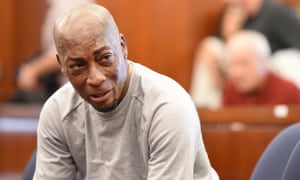Carey Gillam
 It was a verdict heard around the world. In a stunning blow to one of the world’s largest seed and chemical companies, jurors in San Francisco have told Monsanto it must pay $289m in damages to a man dying of cancer which he claims was caused by exposure to its herbicides. Monsanto, which became a unit of Bayer AG in June, has spent decades convincing consumers, farmers, politicians and regulators to ignore mounting evidence linking its glyphosate-based herbicides to cancer and other health problems. The company has employed a range of tactics – some drawn from the same playbook used by the tobacco industry in defending the safety of cigarettes – to suppress and manipulate scientific literature, harass journalists and scientists who did not parrot the company’s propaganda, and arm-twist and collude with regulators. Indeed, one of Monsanto’s lead defense attorneys in the San Francisco case was George Lombardi, whose resumé boasts of his work defending big tobacco.
It was a verdict heard around the world. In a stunning blow to one of the world’s largest seed and chemical companies, jurors in San Francisco have told Monsanto it must pay $289m in damages to a man dying of cancer which he claims was caused by exposure to its herbicides. Monsanto, which became a unit of Bayer AG in June, has spent decades convincing consumers, farmers, politicians and regulators to ignore mounting evidence linking its glyphosate-based herbicides to cancer and other health problems. The company has employed a range of tactics – some drawn from the same playbook used by the tobacco industry in defending the safety of cigarettes – to suppress and manipulate scientific literature, harass journalists and scientists who did not parrot the company’s propaganda, and arm-twist and collude with regulators. Indeed, one of Monsanto’s lead defense attorneys in the San Francisco case was George Lombardi, whose resumé boasts of his work defending big tobacco. Now, in this one case, through the suffering of one man, Monsanto’s secretive strategies have been laid bare for the world to see. Monsanto was undone by the words of its own scientists, the damning truth illuminated through the company’s emails, internal strategy reports and other communications.
Now, in this one case, through the suffering of one man, Monsanto’s secretive strategies have been laid bare for the world to see. Monsanto was undone by the words of its own scientists, the damning truth illuminated through the company’s emails, internal strategy reports and other communications.
The jury’s verdict found not only that Monsanto’s Roundup and related glyphosate-based brands presented a substantial danger to people using them, but that there was “clear and convincing evidence” that Monsanto’s officials acted with “malice or oppression” in failing to adequately warn of the risks.
Testimony and evidence presented at trial showed that the warning signs seen in scientific research dated back to the early 1980s and have only increased over the decades. But with each new study showing harm, Monsanto worked not to warn users or redesign its products, but to create its own science to show they were safe. The company often pushed its version of science into the public realm through ghostwritten work that was designed to appear independent and thus more credible. Evidence was also presented to jurors showing how closely the company had worked with Environmental Protection Agency officials to promote the safety message and suppress evidence of harm.
“The jury paid attention throughout this long trial and clearly understood the science and also understood Monsanto’s role in trying to hide the truth,” said Aimee Wagstaff, one of several attorneys around the US who are representing other plaintiffs making similar claims to Dewayne Johnson.
This case and the verdict specifically concern the 46-year-old father who developed a severe and fatal form of non-Hodgkin’s lymphoma while working as a school groundskeeper, repeatedly spraying large quantities of Monsanto’s Roundup and other glyphosate herbicide brands. Doctors have said he probably does not have long to live.
The ramifications, however, are much broader and have global implications. Another trial is set to take place in October in St Louis and roughly 4,000plaintiffs have claims pending with the potential outcomes resulting in many more hundreds of millions, if not billions of dollars in damage awards. They all allege not only that their cancers were caused by exposure to Monsanto’s herbicides, but that Monsanto has long known about, and covered up, the dangers. The team of plaintiffs’ attorneys leading the litigation say they so far have brought to light only a fraction of evidence collected from Monsanto’s internal files and plan to reveal much more in future trials.
Monsanto maintains it has done nothing wrong, and that the evidence has been misrepresented. Its attorneys say they have the bulk of scientific research firmly on their side, and that they will appeal against the verdict, meaning it could be years before Johnson and his family see a dime of the damage award. In the meantime, his wife, Araceli, works two jobs to support the couple and their two young sons as Johnson prepares for another round of chemotherapy.
But as this case and others drag on, one thing is clear: this is not just about one man dying of cancer. Glyphosate-based herbicides are so widely used around the globe (roughly 826 million kg a year) that residues are commonly found in food and water supplies, and in soil and air samples. US scientists have even recorded the weed killer residues in rainfall. Exposure is ubiquitous, virtually inescapable.
Acknowledgement of risk is essential to public protection. Regulators, however, have failed to heed the warnings of independent scientists for too long, even shrugging off the findings of the World Health Organization’s top cancer scientists who classified glyphosate as a probable human carcinogen.
Now, well past time, long-held corporate secrets have been exposed.
In his closing argument, the plaintiff’s attorney, Brent Wisner, told the jury it was time for Monsanto to be held accountable. This trial, he said, was the company’s “day of reckoning”.
No comments:
Post a Comment